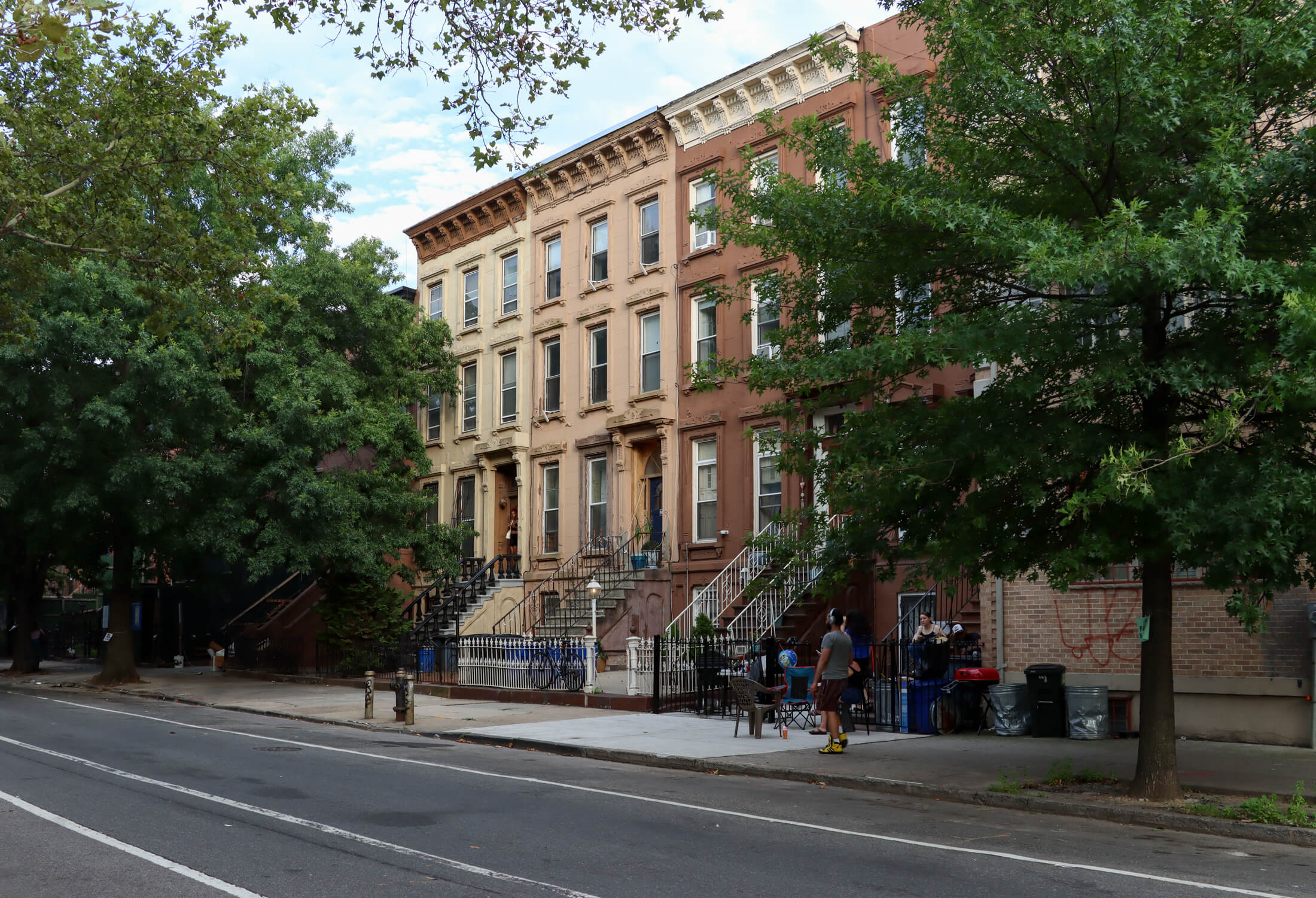Building of the Day: 186 Quincy Street
Brooklyn, one building at a time. Name: Originally J. C. Hoagland house Address: 186 Quincy Street Cross Streets: Bedford and Nostrand Avenues Neighborhood: Bedford Stuyvesant Year Built: sometime around 1874 Architectural Style: Second Empire Architect: Unknown Landmarked: No The story: The Hoagland Brothers were one of the great success stories of the late 1800’s. Dr….

Brooklyn, one building at a time.
Name: Originally J. C. Hoagland house
Address: 186 Quincy Street
Cross Streets: Bedford and Nostrand Avenues
Neighborhood: Bedford Stuyvesant
Year Built: sometime around 1874
Architectural Style: Second Empire
Architect: Unknown
Landmarked: No
The story: The Hoagland Brothers were one of the great success stories of the late 1800’s. Dr. Cornelius Hoagland and his brother Joseph were originally from Ohio, and came to Brooklyn with their wives and families after both served in the Union Army, during the Civil War. Cornelius continued to practice medicine, and Joseph went in to the grocery business. During the war, Joseph had worked in the quartermaster’s office, where one of his responsibilities was to order food goods for the Army. This was perfect training for a career in wholesale groceries, and where better to do that than Brooklyn, which had a huge wholesale grocery industry.
Joseph (J.C) would later take credit for the brothers’ next move; they decided to manufacture and market a new baking powder. It was a necessary ingredient in cooking, was cheap to make, and if they marketed it right, it would do well. They got two other partners who put up financing, and the Royal Baking Power Company was launched. One baking powder works as well as another, but through astute and relentless advertising and marketing, Royal Baking Powder soon became a very successful company, and a household name. The Hoagland’s were rich. Cornelius commissioned the Parfitt Brothers, one of the best architectural firms in Brooklyn, to design a grand new mansion on Clinton Avenue, now an important landmarked house. A few years earlier, Joseph moved farther east, in the upscale Bedford neighborhood, and had this house built.
The exact date of the house is unknown, as are the architect or builder, the first entry in the newspapers for the Hoagland’s at this address is 1874. In November of 1875, a bold thief climbed up the pillars on the porch and broke into the second story of house while the family was having dinner on the ground floor. He stole money and jewelry valued at over $400. A short, stout man in an overcoat was seen running down the street soon afterward, and was presumed to be the thief.
The Hoagland family did not live here all that long, and by 1892, the house belonged to someone named Grant. In 1902, this house, which was according to the Eagle, was in a part of Brooklyn the residents themselves called the “Upper Hill”, formed one of the earliest block associations on record in Brooklyn. They organized in order to coordinate a “Block Beautiful,” at the time, only the second of its kind in Brooklyn, a street-wide beautification campaign, where homeowners planted flowers and shrubs in their yards, hung flower baskets, and generally beautified their homes and the entire block. Today, these contests are held every year. One of the proud homeowners on this block was Daniel Winant, who now lived here at 186.
The house, or part of it, was the King Studio, in 1909, a music school run by William and Edith King, and by 1914, was known as the Woodrow Apartments. One of the tenants in 1924 was a Mrs. Renard, who was African American, just an indication of how long black folks have been in Bedford Stuyvesant. Another tenant was a Mrs. Catherine Galloway, a widow who lived there in 1927. She was in the papers for several months that year, but not for a good reason. She was found dead, her head bashed in with a tire iron, at her daughter’s home in Hempstead.
The papers called the assailant a “Fiend.” Her daughter and her husband, Harold Webster, lived in the same building as his brother, a veterinarian, and a medicine cabinet had been broken into, and the office ransacked. It was thought a “crazed drug fiend” had broken in, and surprised Mrs. Galloway. However, a few days later, Harold Webster was arrested for the murder. Turned out Harold was angry at his mother-in-law because she had lent him money for a real estate deal that fell through and she wanted her money back. She was well off and had written him out of her will because of that, and he had gone to see her to change her mind. It didn’t work out.
One more scandal involved the people who now lived in Joseph Hoagland’s old mansion. A 27 year old teacher named George Armstrong lived there in 1918. He developed an attachment to another teacher, 19 year old Euphemia Talman, who worked at the same school. He invited her out; they went to several different clubs, and ended back at his apartment. They stayed there for three days. A missing person’s alert went out from her parents, and days after that, Miss Euphemia was found wandering around in the “White Light District,” as the Times Square/Theater District was called. Armstrong was arrested for kidnapping.
186 is still a great looking building, with the only big changes being the brick porch and corrugated tin roof above it. It even has the original doors under a lot of paint. A garage was also put in the front yard. The house looks as solid as a rock, framed by the heavy quoins on the side, and topped off with those great windows. Today, the house has 11 units, and was a House of the Day back in 2007, when the owner wanted $1.1 million for it. The house did not sell at that time, and has been taken off the market, although there is a lis pendens on it. Supposedly some original detail remains inside. Interestingly enough, Joseph Hoagland’s brother’s house, not all that far away on Clinton Avenue was also made into a multi-unit building. Since Joseph Hoagland was also a very active real estate developer, he might have approved. GMAP











This looks like a classic Hollywood haunted house; Psycho, Addams Family, you name it.